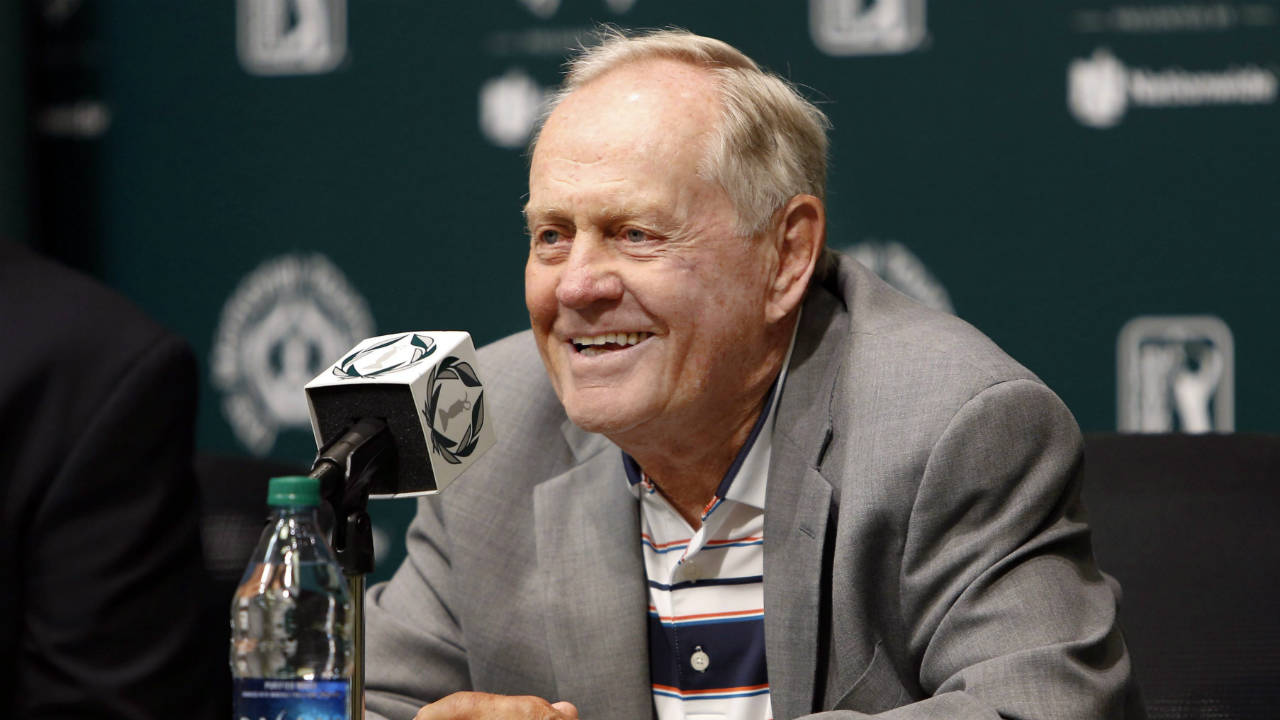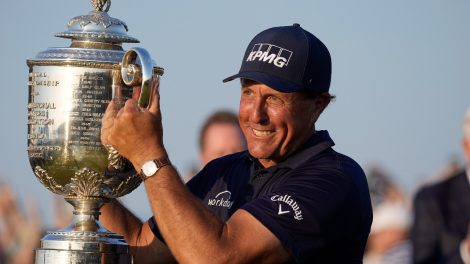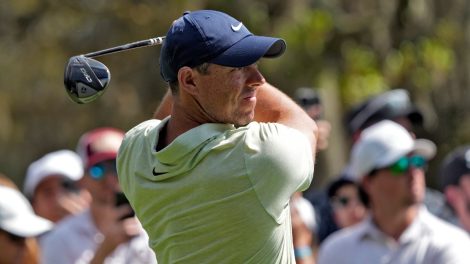You don’t get to the top of anything by spending all your time looking back.
That would be the message to be gleaned from Jack Nicklaus’ first appearance in any capacity at the Canadian Open in at least 20 years, by the count of the great man himself.
He was drawn to Glen Abbey Golf Club in Oakville as a way to recognize one of golf’s longest standing tournaments in Canada’s 150th year.
The good folks of Golf Canada presented Nicklaus with a hockey jersey, naturally, with No. 17 on it. Nicklaus allowed that it was reasonable to recognize the year of Canada’s sesquicentennial, otherwise, the 18-time major champion was worried someone had counted wrong.
The 108th Canadian Open (Nicklaus: “I played in most of ‘em”) tees off on Thursday amid concerns about how many more – there have been 29 held here since the course opened in 1977 – will be held at the course that holds the distinction of being Nicklaus’ first solo signature design.
The parkland layout seems likely to end up as a luxury real estate development – which don’t seem to be in short supply in Oakville, but whatever – although when and how that actually comes to pass remains to be seen. Since the 229-acre property was designated for development by ClubLink Corporation in 2015, residents and politicians have been resistant to the idea of trading in a slice of historic greenspace for more houses. The consensus is that any change of its status is years away.
But Nicklaus, 77, doesn’t sound like he’ll be entirely torn up if his course is torn down, even if he can’t recall if it has ever happened to one of his designs, of which there are more than 400 worldwide.
“It is what it is,” said Nicklaus, who won 73 PGA Tour events, but never the Canadian Open. “I hate to see it torn down but progress moves on and if we did this golf course 41 years ago this way I think we can do something better today, I think I’ve gotten better.”
Which was Nicklaus’ way of hinting that there’s a chance that he may have one more Canadian Open-worthy course in him. He’s spending part of his visit looking at potential sites for another course he can design on behalf of Golf Canada.
“We’re working on it,” said Nicklaus. “It’s a work in progress. We are looking at property and trying to settle on something that may work out, nothing is signed or anything else, but we’re trying to figure out what we’re trying to do.”
[relatedlinks]
It’s a tall order. It’s estimated that a tournament-worthy site today would require about 300 acres – 200 for the golf and 100 for the infrastructure around it. Given real estate values in the Greater Toronto Area, it’s hard to envision it coming together and in retrospect makes the Golf Canada’s decision to sell Glen Abbey for $40 million in 1998 seem less than wise. If, however, the government gets involved and it’s integrated into some kind of multi-sport development, who knows?
For the time being, the Abbey and the Canadian Open are linked. The course will host the tournament again in 2018, the fourth straight year it’ll be in Oakville, the longest stretch since Golf Canada began moving the championship around with some regularity beginning in 2001. And the tournament itself seems on solid footing with RBC committing to another six-year sponsorship cycle. The dates of the tournament may be in flux with the PGA Tour making noises about restricting its schedule so that the FedEx playoffs wrap up in August, before the NFL season kicks off. What that means for the only Canadian date on the schedule isn’t clear, although there’s no reason to expect it would be positive. The post-British Open date already presents challenges with only five of the top 40 men in the world rankings in the field this week.
Is Glen Abbey a draw, or a reason for pros to pass? Hard to tell. Its popularity has been mixed, with some pros thinking the course a bit vanilla, lacking the eye-pleasing shapes of the older country clubs or lacking any geographic element that makes it stand out.
But even then, the idea of losing track with history, good or bad, makes the future of Glen Abbey and its potential passing notable. In 2000, Tiger Woods hit one of the greatest shots of his career – a 210-yard 6-iron from a fairway bunker on the 18th hole to seal his only Canadian Open win. The bunker being someone’s backyard one day is tough to swallow.
“There’s a lot of history here,” said Graham DeLaet, the veteran Tour pro from Weyburn, Sask., who will be among a contingent of 16 Canadians trying to become the first to win their national championship since Pat Fletcher did in 1954. “Which would make it a shame if the golf course becomes houses, not just in golf but in Canadian history.
“But at the same time, I’ve never played well here, I’ve missed a lot of cuts here and my best finish is probably about 50th, so I don’t have the greatest of vibes when I come here and I love to see [the Canadian Open] moved around a little bit… but it will be a shame if this place is gone, that’s for sure.”
History is made to be written, of course. Nicklaus sounds like he’s accepted that his first solo design may go the way of a sub-division, but the blow may be softened if Canada ends up being the site of one of his last designs too.










